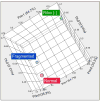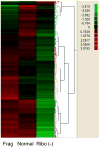Management of High-Throughput DNA Sequencing Projects: Alpheus
- PMID: 20151039
- PMCID: PMC2819532
- DOI: 10.4172/jcsb.1000013
Management of High-Throughput DNA Sequencing Projects: Alpheus
Abstract
High-throughput DNA sequencing has enabled systems biology to begin to address areas in health, agricultural and basic biological research. Concomitant with the opportunities is an absolute necessity to manage significant volumes of high-dimensional and inter-related data and analysis. Alpheus is an analysis pipeline, database and visualization software for use with massively parallel DNA sequencing technologies that feature multi-gigabase throughput characterized by relatively short reads, such as Illumina-Solexa (sequencing-by-synthesis), Roche-454 (pyrosequencing) and Applied Biosystem's SOLiD (sequencing-by-ligation). Alpheus enables alignment to reference sequence(s), detection of variants and enumeration of sequence abundance, including expression levels in transcriptome sequence. Alpheus is able to detect several types of variants, including non-synonymous and synonymous single nucleotide polymorphisms (SNPs), insertions/deletions (indels), premature stop codons, and splice isoforms. Variant detection is aided by the ability to filter variant calls based on consistency, expected allele frequency, sequence quality, coverage, and variant type in order to minimize false positives while maximizing the identification of true positives. Alpheus also enables comparisons of genes with variants between cases and controls or bulk segregant pools. Sequence-based differential expression comparisons can be developed, with data export to SAS JMP Genomics for statistical analysis.
Figures






References
-
- Butcher LM, Beck S. Future impact of integrated high-throughput methylome analyses on human health and disease. Journal of genetics and genomics = Yi chuan xue bao. 2008;35:391–401. - PubMed
Grants and funding
LinkOut - more resources
Full Text Sources
